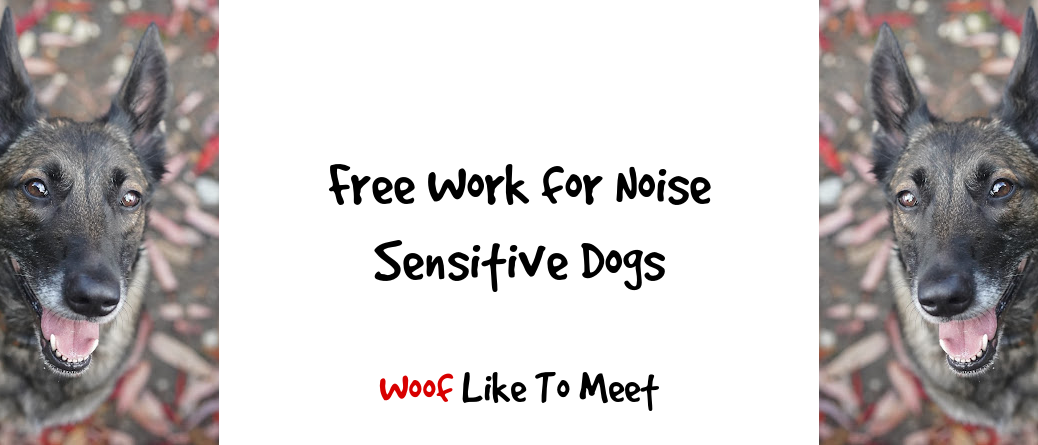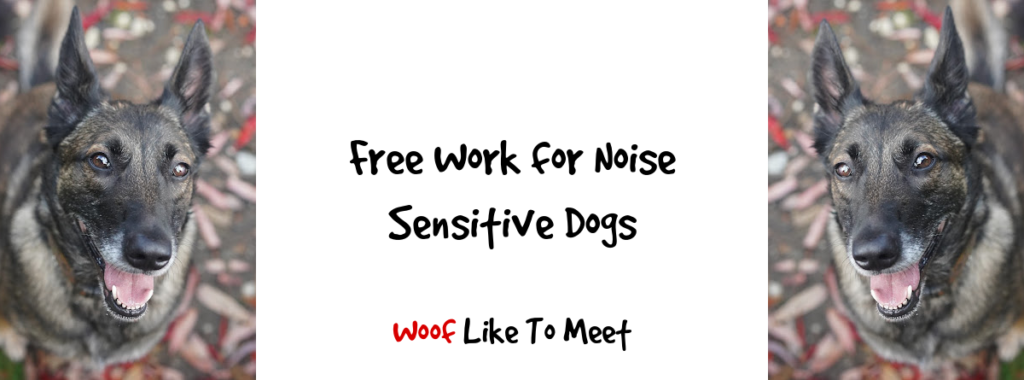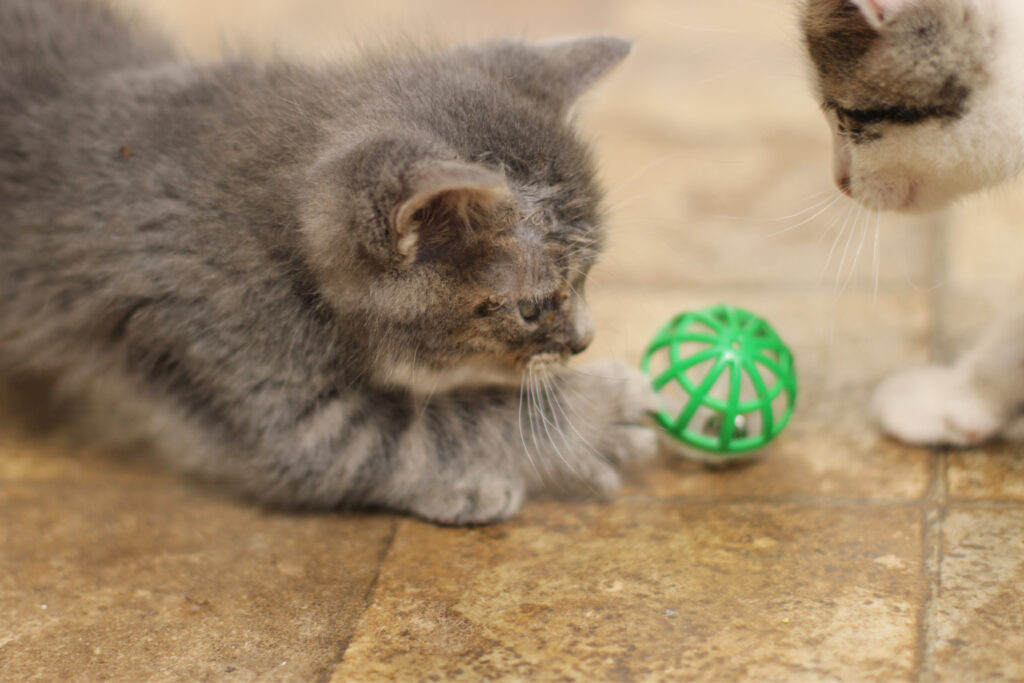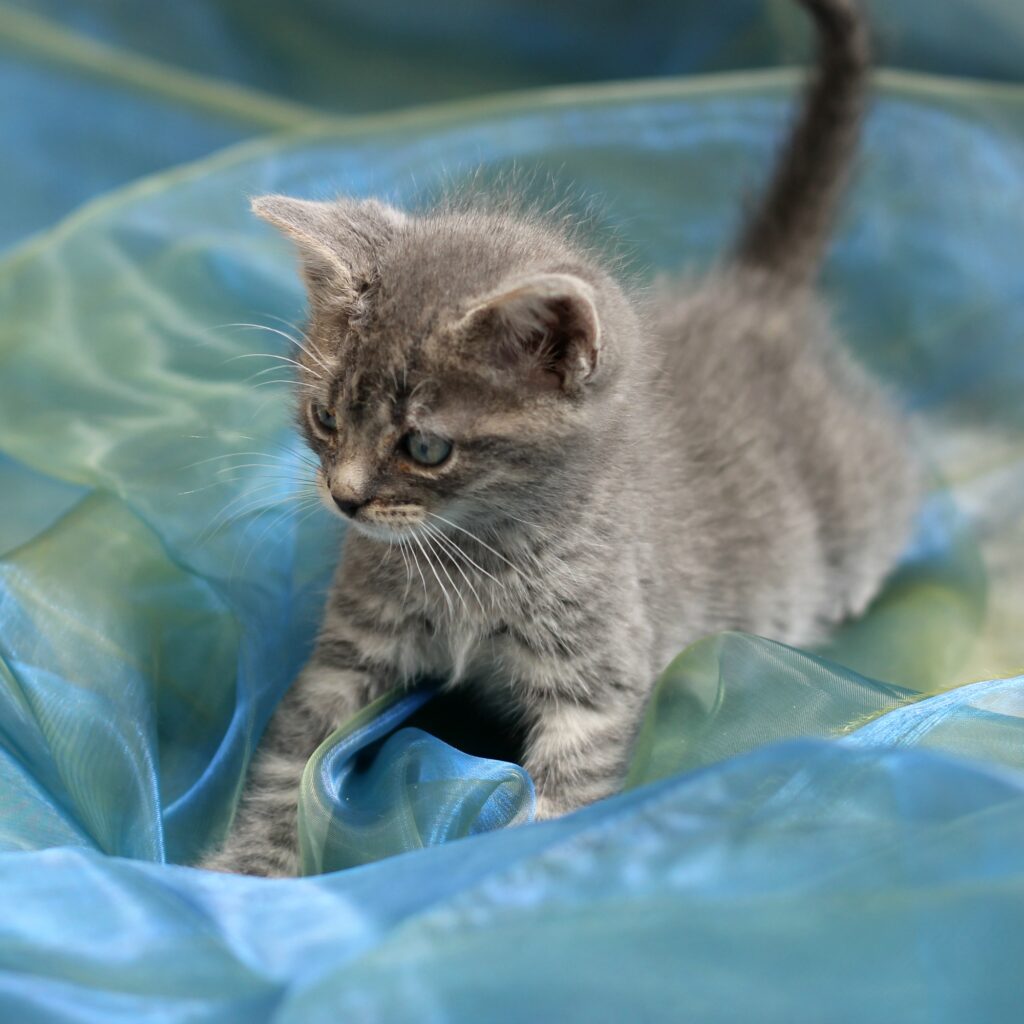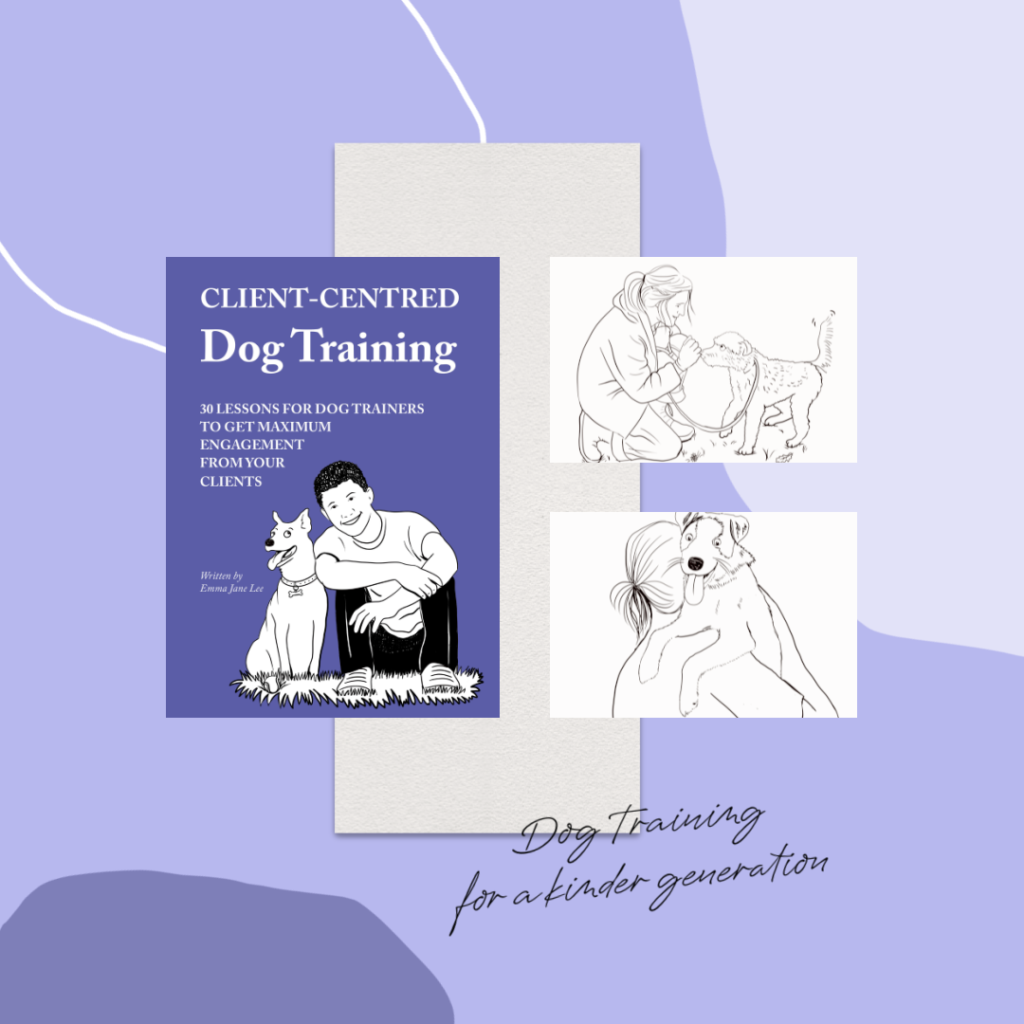Working with noise-sensitive dogs can be really tough for many reasons. It’s a problem that can be rooted in many things, not least breed, genetics, parental fearfulness, lack of appropriate habituation up to 13 weeks and then ongoing health problems.
There can be underlying health issues that compound earlier problems. The link between noise sensitivity and underlying musculoskeletal issues is fairly well documented and it’s one of the first problems I will ask clients to investigate if they tell me that their dog is noise sensitive.
We also know that fearfulness can be an inherited quality, so if your dog’s parents weren’t robust and resilient souls, it’s likely that your dog might have inherited some of that fearfulness from their parents. The parental contribution to genes is much stronger than that of breed.
For dogs who missed out on early experiences with various noises, it’s not uncommon to find that they have specific fears of things they did not experience early enough in life such as vacuum cleaners, storms, gunshot and fireworks. Encounter any of these things at the wrong point in your development with guardians who don’t know how to address it and you may find that fear responses become much more difficult to eradicate.
Not only that, but many noise sensitivities actually cause startle responses like these ones:
Loud and startling noises cause the acoustic startle response. Did you know that the acoustic startle response can even happen when you’re asleep? Our ears are always working even when our eyes aren’t.
Anyway, like any unconditional reflex, they’re generalised across the species. All dogs can startle. They’re also largely performed in the exact same way in a species.
However, we tend to think that reflexes are invariant and that’s not true. They can have different thresholds for individuals who are sensitised to them, and they can be bigger, more sudden or last longer. I don’t think I inherited my sensational sneezes from my mum, that’s for sure. She’s got a very sensitive nose and sneezes much more than I do.
Dogs may well have been sensitised to things that startle them.
Since you can’t countercondition an unconditioned stimulus, all you’ve got open to you is temporary habituation, sensory adaptation or desensitisation. That’s fancy science speak to say that whatever you do is unlikely to be permanent although it may last for as long as you’re in a particular environment. Think about if you’ve ever moved from one place to another and how long it took you to get used to the lack of sound or the excess of it.
That process of getting used to sounds is known as sensory adaptation. For instance, when I moved to the country, it took ages to adapt to the loud morning birdsong, the frogs and the very noisy cows. It got to the point where I didn’t even notice them anymore. When I stayed in one place in Cuba, it was so absolutely quiet that it was frightening. The walls were immensely thick and it was so dark in the rooms because the corridors were unlit and there were no streetlights that it took ages for me to habituate to the complete absence of light and sound, like being in a sensory deprivation chamber.
Generally speaking, as time goes on, we adapt to sensory information.
However, we can also sensitise to it, meaning that it becomes so noticeable that we can’t cope with it.
The processes of sensory adaptation, habituation and desensitisation are essentially the same: our bodies gradually get used to stuff until…
We have a break from it and then return.
You might have noticed that with smells. I, for instance, have adapted to the smell of my dogs. However, if we have a break, lock the house up and then come back…. WOW that dog smell!
For this reason, I’d argue that noise sensitivity is something we may need to do continued work with rather than a process that ever reaches a point of being complete.
However, free work can play a helpful supportive role in that work.
#1 Recognising noise sensitivity
A central tenet of free work is giving the dog freedom to investigate and make choices. Free work isn’t just about setting up some kind of interesting enrichment and feeding opportunities for our dogs and just letting them have at it while we go off and put our feet up. It’s about using that time to observe.
For that reason, I often video sessions and record the order in which dogs select where to go as well as the objects they choose to interact with.
You can use these sessions to identify potential noise sensitivities with your dog.
For instance, if you notice that when you use a Kong Wobbler or a Nose It type of toy, the dog disengages as soon as it hits a skirting board or bit of wooden flooring, that might be a sign the dog is cautious around noises, especially if they’d been engaging with it beforehand.
Perhaps your dog always chooses to drink out of the plastic bowl, even though you’d prefer them to use stainless steel?
Perhaps you notice that they disengage with objects should their tag chink on the item?
Perhaps you notice a difference in how the dog moves when they have their collar tags removed compared to how they move with the tag attached? If you record sessions, you can always use free software like Audacity to identify where there were noises and what your dog did during those times.
Some dogs who have never adapted to particular noises may not be sensitive to a general range of noises. They may be very selective. Free work sessions can help you identify where that happens.
Even including things like fabrics or materials can give you an idea of whether or not your dog chooses to engage with noise. Several dog toys use crackly materials in them yet we know very little about whether or not our dogs enjoy that experience. Free work can help you identify whether they do or not.
#2 Check your vet
If you have a dog who you’ve videoed avoiding certain noisy toys or noisy fabrics, you may then use these free work sessions to share with your vet. It can also be a really useful way to monitor the effects of medication.
Say for instance that you identify your dog avoids both slippy surfaces and also noisy food distributors and they do so regularly, you may use that as part of your discussion with the vet. It may be that the vet identifies an issue, perhaps a tooth causing jaw ache that’s giving the dog earache, or an inner ear infection, perhaps arthritis, and then they intervene surgically or with a course of medication.
It can be really hard to know if the dog feels better.
Comparing free work sessions before and after can be one way to check if the medical intervention is making a difference.
You may need to leave it some time as your dog re-learns that things they previously found less pleasant such as crackly fabrics are not so bad these days. Remember with all painful experiences, we may change our behaviour. Some of those behavioural changes may last long after the painful experience is over. I’ve been using the example of a fall I had back in November on the steps outside my home. I’m still walking down them side-by-side, step by step, two feet on each riser even though the pain has long since gone. Current behaviour is often emotional residue of a past experience.
Therefore, it’s useful to track the habits of your dogs through free work sessions in order to notice any differences that medication might have had. Where we can’t ask our dogs if they feel better, we can use free work to gauge their responses. Dogs who’ve had inner ear infections or problems may also have balance problems, so including surfaces that tip slightly both pre-treatment and post-treatment can give you some idea of how your dog is coping. Likewise for dogs who have musculoskeletal problems, including different heights of surfaces or activities where they have to use their paws as well as their mouths can give you some idea of how they’re coping or compensating.
#3 Start noise free
For dogs who have a history of noise sensitivity and where physical issues have been ruled out or medical interventions are in place, sessions should give dogs time out from the noise of the world around them. Like an engaging hobby can be, free work can offer your dog time out from the constant noise of the home, be it radiators, boilers, tv noise, fridges, cookers or traffic noise beyond the property. It allows your dog some time out where they can focus on other things and can be an important part of decompression.
First, make sure you are in a space where there is as little noise as possible. That may be in a room far from traffic noises or kitchen noises. We forget how noisy kitchens can be.
You may need to unplug things like computers or laptops, even lamps, or to use some white noise generators. You could think about whether or not you want to use music to block out some of the noise, if that’s possible. There are studies about music and relaxation in dogs, but they tend to suggest that dogs adapt quickly to music and any effects are temporary. If you’re going to use free work as a way to desensitise your dog to things like tv noise, then make sure that you aren’t always pairing up the free work sessions with the aversive noise – give your dog some sessions where they don’t have to tolerate things they find unpleasant. While it can be a very useful and easy way to help dogs overcome sensitivity to household noises, if you have to tolerate aversives each time, it isn’t optimal use of free work and you could quickly come to poison your sessions unless you’re using an incredibly gentle stimulus gradient.
Use surfaces that are muted. That may include using rubber rather than carpet. We forget sometimes how much noise carpet can make. We may also want to include rugs if we have a noisy floor. Include different materials underfoot and observe which ones dogs tend to prefer, rotating toys and feeders over different surfaces over a few weeks.
Make sure you also include water bowls that don’t make much noise and that you also remove your dog’s collar or tags.
#4 Gradually include noisier toys, fabrics and floor surfaces
By adding in one or two noisier toys over sessions, we can give our dogs choice over the noise they make. Predictability is important where aversives are concerned, and when animals can make the choice themselves, this can be remarkably empowering. Being able to choose whether or not you make noise is important.
It may be tempting to put higher value food near or in the noisy toys, but avoid the temptation of doing so. In itself, it’s just a form of luring and it uses the power of food to entice dogs closer to objects they’d rather not be too close to. I’d argue that it’s actually more useful to put the least valuable food near or in the noisier toys as you include them, so that although the food is still there, bringing dogs into the proximity of things they’d rather not go near, it’s not using food to coerce them into interacting.
#5 Gradually increase the noise levels during sessions
There are two ways you can do this. One is increasing the noise that dogs have no control over, such as moving to rooms closer to traffic noise, or doing sessions while the washing machine is on a long, slow soak cycle. You might increase the television noise or include music that fluctuates in volume and intensity. You may also want to give the dog plenty of space and include portable food toys so that they have the option of going where they are comfortable and choosing their own level of comfort around exposure to noise. Dogs who can carry a stuffed Kong into another room have an autonomy that can help them build up tolerance for noisy situations or stimuli.
You can also use the toys themselves to increase exposure to noise in ways where the dogs are in control of the noise. This can be very useful with puppies. We should remember to make sure there are plenty of non-noisy options. I’m a big fan of using rustling fabrics or rattling balls as part of kitten enrichment so that they can build up an early tolerance during their critical socialisation period. Free work can be preventative, and arguably, it’s much more powerful when used as such. Be careful not to overwhelm young animals or to make it too complicated. I’ll post about free work sessions for preventative work with puppies in a future post. Suffice to say for now that keeping it easy, lowering frustration as well as incorporating stimulus gradients for frustration and noise sensitivity should lead to much more productive sessions.
Building up from one relatively noisy toy or feeder, such as treats in a box with wrapping paper (as long as the dog won’t eat the paper, obviously) to more noisy scenarios, say cellophane wrapping paper and tin foil can be one way to increase exposure to noise gradually. You can also include much noisier toys such as Kong Wobblers and Nose Its. Ball pits can be made easier by having only one or two balls in at first and building up to a much larger number. Plastic bottles may start with one small treat to get out of them easily and then build up to a number of treats inside. You can also decrease the number of openings or decrease their size so that the dog has to do more work and therefore make more noise in order to get the food.
There are many ways that you can use free work to give the dog control over how much noise they make. You can build resilience around noise in this way, and you can also build coping skills. As well as this, free work can be an ideal adjunct to desensitisation processes and can be used as a form of counterconditioning in itself.
Having the opportunity to engage with noise-making toys when young is vital for puppies and kittens. For those who choose not to engage, we may need to consider ways that we can increase their exposure and choice in a graduated way so as to prevent problems later in life.
One way to start the process is by including materials that make some noise such as chiffon and then including soft wrapping paper as you graduate on to more noisy items. As always, give the individual plenty of choice and make sure you supervise at all times.
If you’re a dog trainer and you’ve not yet picked up a copy of my book yet, you can find it here:

